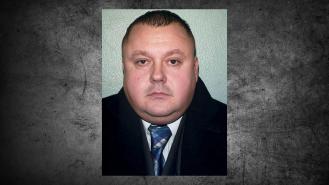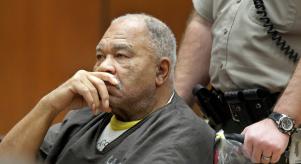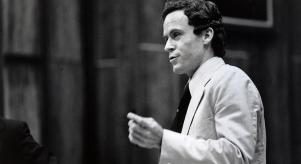
Could double-murderer Christopher Halliwell be linked to more murders?
In 2012, Christopher Halliwell was convicted of the murder of Sian O’Callaghan. Four years later, he would be convicted of the murder of Becky Godden. There has been much speculation that Halliwell has other victims and almost a decade after his arrest, police are still trying to link him to unresolved murders and disappearances.
In March of 2011, 47-year-old Christopher Halliwell was arrested in Swindon, Wiltshire, South England, in connection with the disappearance of 22-year-old Sian O’Callaghan. While under arrest, Halliwell confessed to the murder of Sian as well as to the murder of 20-year-old Becky Godden, who had been missing for almost ten years. Following the confession, Halliwell led police to the two bodies.
Since then, police have shared their belief that Halliwell could have more victims. Following Halliwell’s sentencing, Detective Superintendent Sean Memory stated that Halliwell had spoken of a desire he had to become a serial killer in 1985 and relayed his fear that Halliwell had more victims since there was an eight-year gap between the murder of Becky and Sian. He stated: ‘I am also very, very clear that there must be other victims out there, whether they are sexual offences or other women that he has taken.’ He also appealed directly to Halliwell, urging him to ‘tell the truth for once in your life and come speak to me’ (International Business Times, 23 September, 2016 – ‘Christopher Halliwell Will Never be Released from Jail for Becky Godden Murder as Police Fear More Victims’).
Halliwell first became known to police in the 1980s when he was convicted of burglary and sent to HMP Dartmoor. It was while incarcerated here that Halliwell said to his cellmate, Ernest Springer, that he had sex with a woman while strangling her and had asked how many women he would have to kill to be considered a serial killer (Swindon Advertiser, 19 September, 2016 – ‘Murderer Asked How Many Women He Would Have to Kill to be a Serial Killer’). Following his release from prison in 1987, Halliwell moved back to Swindon where he took up a job as a window cleaner. Here, he married Lisa Byrne with whom he had three children.
In 2005, Halliwell divorced Byrne and settled down with his neighbour, Heather Widdowson, and her three daughters. Halliwell began working as a taxi driver which allowed him to cruise the streets late at night without falling under a cloud of suspicion. Moreover, he was an avid fisherman and knew Swindon and the surrounding area like the back of his hand (The Herald, 19 September, 2016 – ‘Christopher Halliwell “May Have Killed More Women”1). Unbeknownst to either Byrne or Widdowson, Halliwell had been picking up sex workers throughout their relationships with him and he had been harbouring sadistic, sexual fantasies.
Among the cases which some speculate involved Halliwell are the disappearance of Claudia Lawrence, who vanished in York in 2009, and the murder of Melanie Hall, who disappeared after leaving a nightclub in Bath in 1996. Steven Fulcher, whose team captured Halliwell, would state that Halliwell’s ‘pattern of behaviour’ was consistent with both of these cases which entailed women walking alone at night. Melanie’s body would be found in 2009 just off the M5 in Thornbury; there was evidence that she was bound with a rope that was ‘consistent with Halliwell’s interests.’ In the case of Claudia, Halliwell’s father lived just a couple of streets away from where she vanished (International Business Times, 25 September, 2016 – ‘Killer Christopher Halliwell Could be Linked to Claudia Lawrence Disappearance’).
Some of the other cases that Halliwell could be linked to include the murders of Eila Karjalainen who was strangled to death in Oxfordshire in 1983, Shelley Morgan who was stabbed to death in Bristol in 1984, Linda Donaldson who was stabbed to death in Lowton in 1988, Ann Heron who was stabbed to death in Darlington in 1990, Maria Christina Requena who was stabbed to death in Lowton in 1991, Janine Downe who was strangled to death in Hatton in 1991, Carol Clark who was strangled to death in Bristol in 1993, Dawn Shields who was strangled to death in the Peak District in 1994, Sharon Harper who was strangled to death in Grantham in 1994, Julie Finley who was strangled to death in Lancashire in 1994, Lindsay Jo Rimer who was strangled to death in West Yorkshire in 1994, Caroline Glachan who was beaten to death in West Dunbartonshire in 1996, Julie Jones, who was beaten to death in Manchester in 1998, Vicky Glass who was killed in North Yorkshire in 2001 and Michaela Hague who was stabbed to death in Sheffield in 2001.
There is also speculation that he was involved in the disappearances of Sandra Brewin who vanished in 1994, Sally Ann John who vanished in 1995, Helen Sage who vanished in 1997, Donna Keogh who vanished in 1998, Georgina Moore, 1998, Thi Hai Nguyen, 2005 and Pauline Currie, 2006 (North Yorks Enquirer – Chronological Profile of Christopher Halliwell’s Life and the Crimes Potentially Attributed to Him’).
In 2017, Wiltshire Police and forensic experts embarked on the former home of Halliwell, located on Broad Street, Swindon, to excavate for more bodies or evidence of more crimes. The search, however, was unfruitful (Swindon Advertiser, 21 February, 2017 – ‘Forensic Officers Working at Former Home of Double Murderer Christopher Halliwell’).
That same year, Fulcher would release a book which revealed that in 2014, clothing and other items were found in a pond in Ramsbury as well as other items buried nearby. This area was near to where Sian’s body was found. He wrote that these items indicated that a serial killer was hoarding ‘trophies’ from their victims. Among the items were clothing that belonged to Sian and Becky but none of the other items have been identified. ‘If my suspicions are right, if the evidence in the trophy store suggests a truth that still lies hidden, then Halliwell had a prolific propensity to murder – perhaps as often as once or twice a year’ (Catching a Serial Killer by Stephen Fulcher ).
The ten-year anniversary of the murder of Sian passed in March of 2021 and Wiltshire Police would release a statement which read in part: ‘We continue to keep an open mind in relation to any further offences that Christopher Halliwell may have committed and will follow the evidence wherever that may take us’ (Swindon Advertiser, 19 March, 2021 – ‘Wiltshire Police Releases Statement on Christopher Halliwell Cold Case’).
While police still continue to work on the case, Christopher Halliwell has not yet been charged with any additional crimes.







